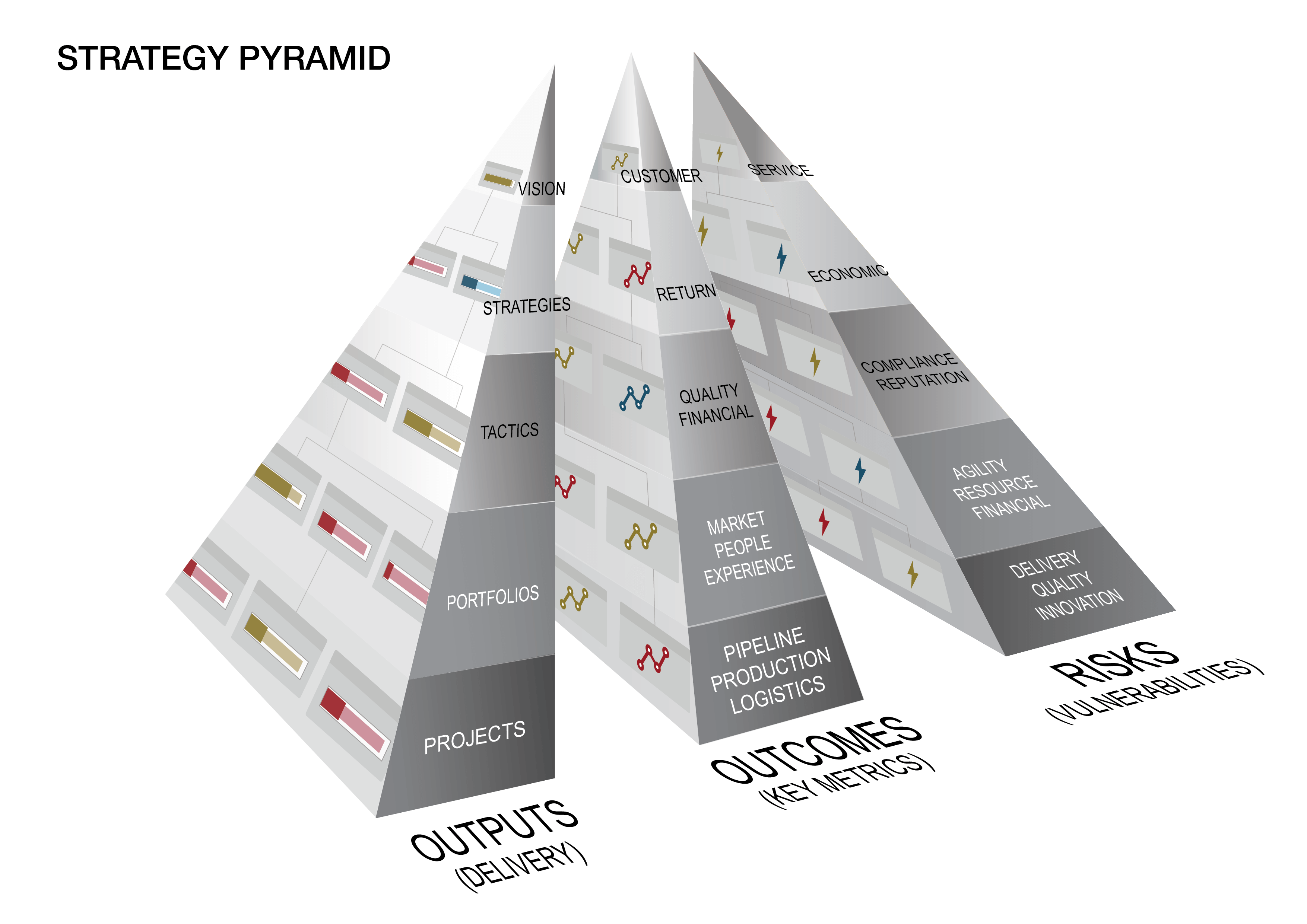Everyone Needs a Strategy Pyramid
When you Google image search “strategy pyramid” not surprisingly you get a vast amount of results; your browser will be chocka with an array of multicolored representations depicting the best way to illustrate a business strategy. So what do they have in common? Apart from the rampant use of color, they are all different. This will come as no surprise as business strategy is so specific to each and every business that creates one, not to mention the various industry thought leaders that have embedded their approach into the familiar shape. However you can count on one hand the number that are genuinely 3 dimensional. So these pyramids are really business strategy triangles (which doesn’t really sound as good)!
Strategic depth
Apart from being harder to draw, considering strategic execution as a pyramid is significantly more complex. Interpreting strategic thinking in the context of a business requires depth as well as hierarchical levels; our pyramid requires slices with themes running through it.
A slice of pyramid
So what are these strategic slices? The first slice describes the hierarchical decomposition of strategic activities, from vision to operational intent; it describes organizational output, key result areas – work! Perhaps in the form of departments, units, geographies, objectives, or myriad other cascading models. Now slice our pyramid from the apex to the base 3 times. The second slice represents outcome, the structured quantifiable metrics (key performance indicators if you prefer) that monitor if our activities are indeed achieving the intended result. Slice three is our strategic business risks; the risk of failed strategic activity must be considered as it may have profound internal and external impact. Finally slice 4 represents priority, we need to bring emphasis, in the form of weighing, toward high value strategic activity. It needs to be harder for strategically critical business initiatives to outperform, these activities need close management attention.
The problem with triangles
The reason this is a pyramid and not a series of strategic triangles is that there must be linkage and integration between the slices, one overlays the next, they can not be considered in isolation. If an activity is not delivered, or a metric is not achieved, this may trigger its companion risk, that risk may then impact another activity(s). Those points of integration are like a system of tunnels running through the core of our strategic pyramid. However this information needs to be clear and simple to navigate and understand, that is the challenge. Take a look at StrategyBlocks to see how we do it.
In my next blog I am going to talk about strategic themes and the importance of those in the context business strategy.




Leave A Comment